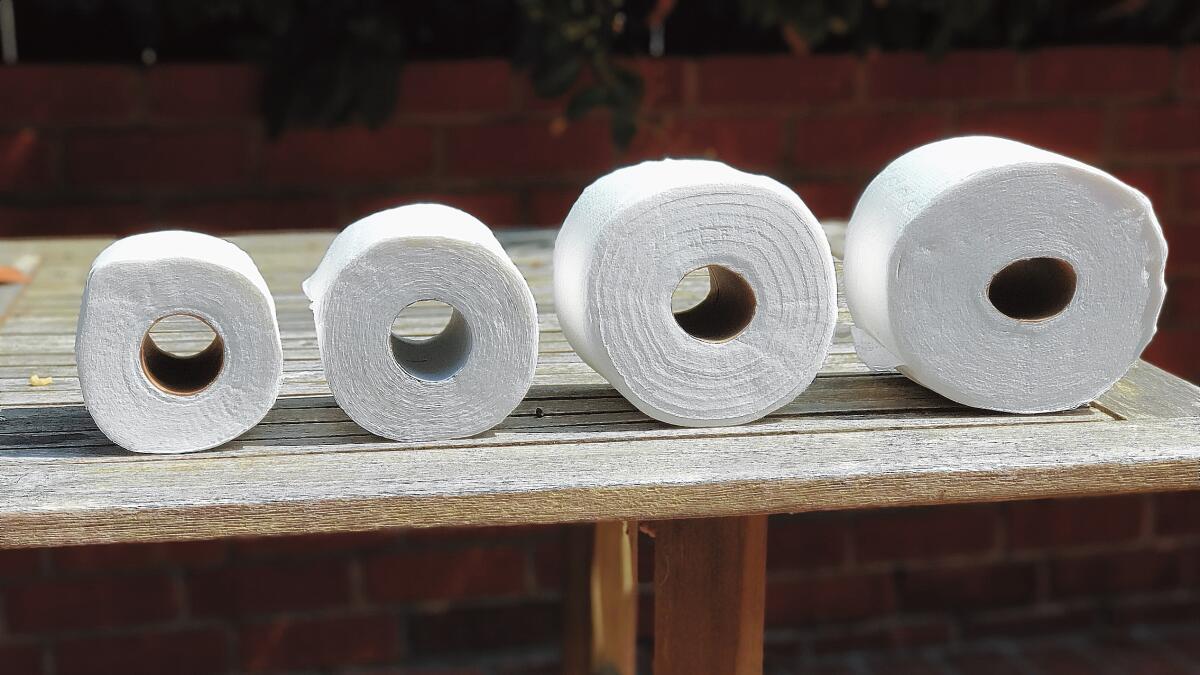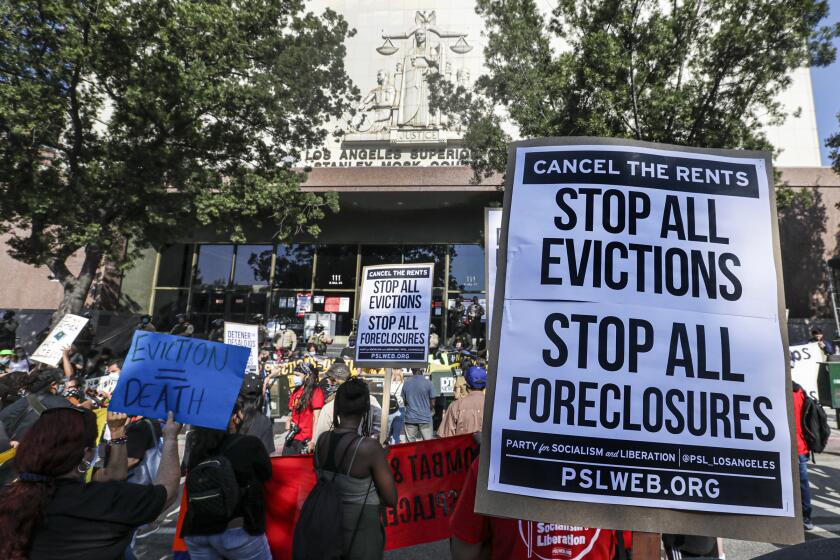Why the housing market is making your toilet paper more expensive

- Share via
Toilet paper prices are on the rise yet again, and the blame can be pinned on an unexpected culprit: the housing market slump.
The housing downturn has sparked a crisis in lumber, sending futures tumbling more than 60% in the last 12 months. As a result, sawmills are closing. In Canada, the world’s largest softwood lumber producer, roughly a third of sawmill capacity is now shuttered in British Columbia.
That’s causing ripples across the global paper supply chain, which depends on the byproducts generated at the plants. Now, the world is facing a squeeze for wood pulp — the raw material for products such as bath tissue.
Costs for pulp globally are climbing, and toilet paper makers including Kimberly-Clark Corp. have implemented price hikes in an effort to boost margins. U.S. retail prices for toilet paper have already surged about 20% from July 2021 to the end of last year, according to NielsenIQ.
The saga of toilet paper shows just how difficult it is for global supply chains to bounce back from the snarls that have tormented commodity markets over the last few years. Increased volatility, pandemic-induced logistical woes and Russia’s invasion of Ukraine have caused wild price swings and some shortages of raw materials. That underscores why supply-driven inflation has been difficult to tame.
What L.A. needs to do for renters after the eviction moratorium expires on Jan. 31, plus more from the week in Opinion.
In lumber, the market started plunging after a dizzying spike to a record high in 2021. The turnaround caused producers from West Fraser Timber and Canfor to idle or close operations in British Columbia. That’s a region that produces a premium kind of pulp known for giving high-quality toilet paper a cushy feel. Canada accounts for about half the global production of such fiber, called northern bleached softwood kraft.
“It’s a real shame mills are down,” said Joe Nemeth, manager of the BC Pulp and Paper Coalition. Companies can’t substitute the fiber for a lower-quality one and achieve the same sturdiness and softness in the tissue as “it’s not something you want to use at home if you want to blow your nose or wipe your backside,” he said.
Brazilian pulp company Klabin on Thursday confirmed that producers of softwood pulp around the globe have increased prices by $30 to around $970 per metric ton amid the tighter market.
Consumers are trying to cope with the higher toilet paper prices by switching to cheaper brands, buying smaller packages or simply cutting back.
Retail unit sales of Kimberly-Clark toilet tissue dipped 2.9% in the three months through Jan. 28 as the company raised prices 9.7%, a Barclays analysis of NielsenIQ data shows. Georgia-Pacific experienced a similar decline.
The average rate on a 30-year fixed-rate mortgage rose above 7% for the first time since 2002, according to a widely watched survey from Freddie Mac.
Kimberly-Clark, which makes bath tissue, paper towels and other products such as diapers, said in late January that it had implemented new hikes without specifying the products involved. The company has also reduced pack counts and the number of sheets on some products as it seeks to manage higher costs.
The good news for consumers is that there are signs of relief ahead.
Canadian sawmill closures are tightening the pulp market for now, but the effect on prices will eventually be balanced by weaker consumption and more supply available from Northern Europe, said Kevin Mason, of ERA Forest Products Research.
Producers in Sweden and Finland are adding 1 million tons per year of production capacity by the second half of 2023, Fastmarkets senior economist Patrick Cavanagh estimates. That will completely offset losses in Canada, even if shutdowns there continue throughout the year, he said.
“The question now becomes if a period of tight market conditions will develop before the majority of the new capacity arrives,” Cavanagh said.
More to Read
Inside the business of entertainment
The Wide Shot brings you news, analysis and insights on everything from streaming wars to production — and what it all means for the future.
You may occasionally receive promotional content from the Los Angeles Times.












